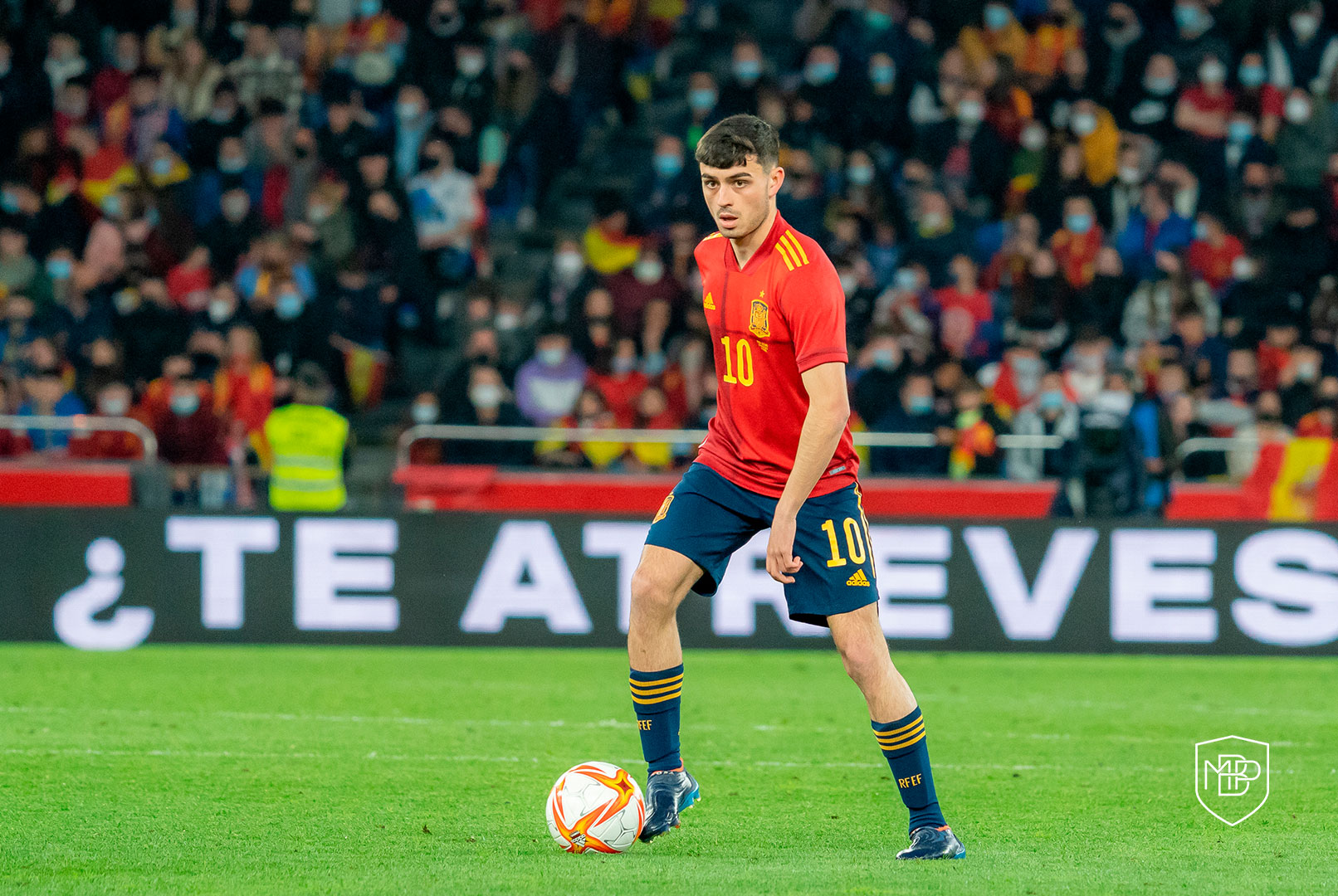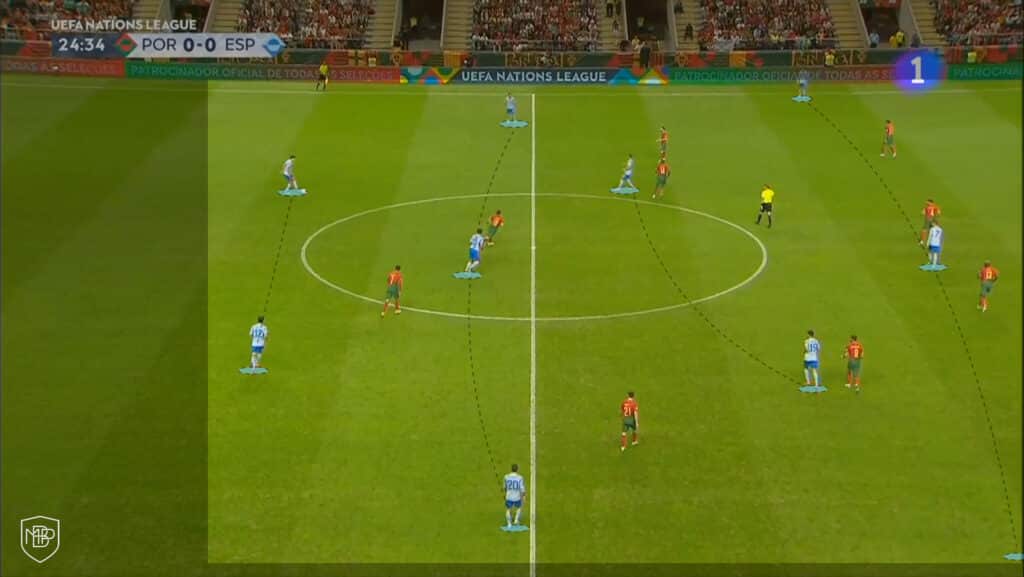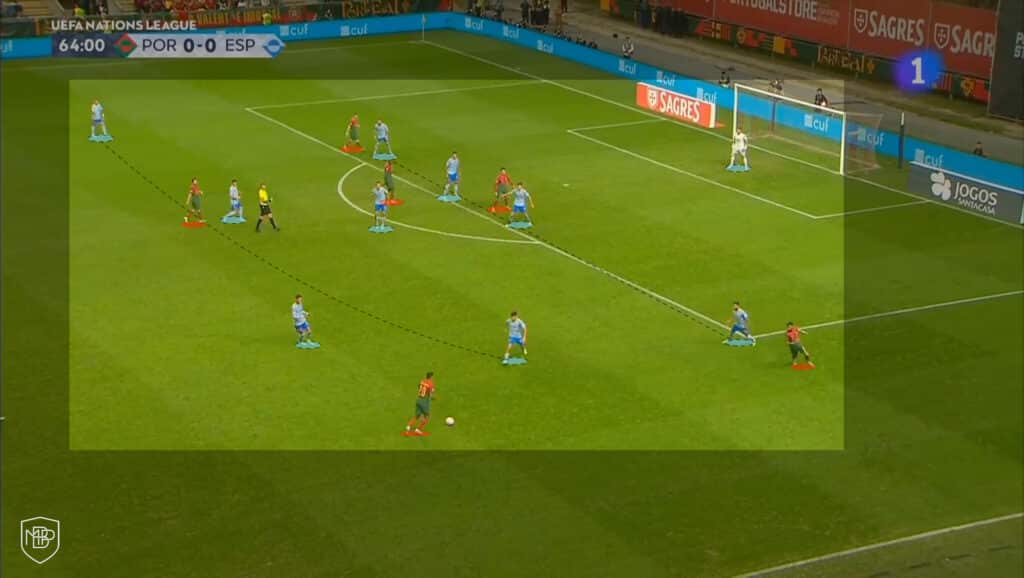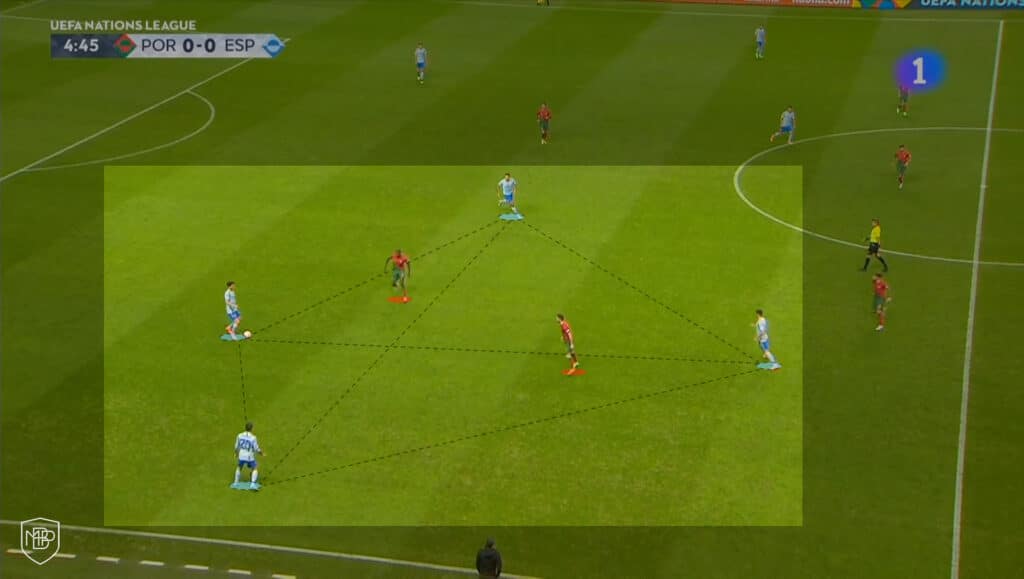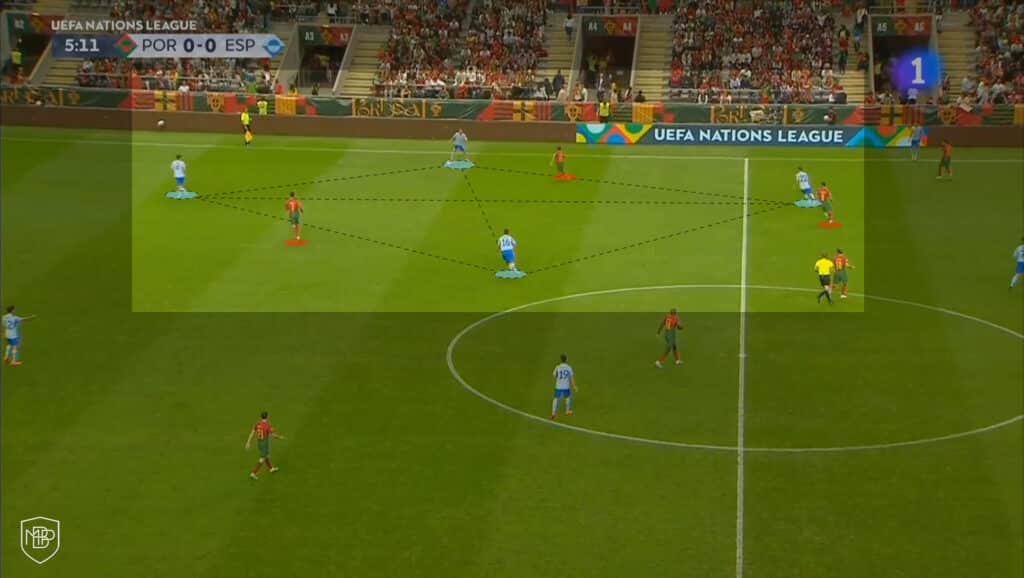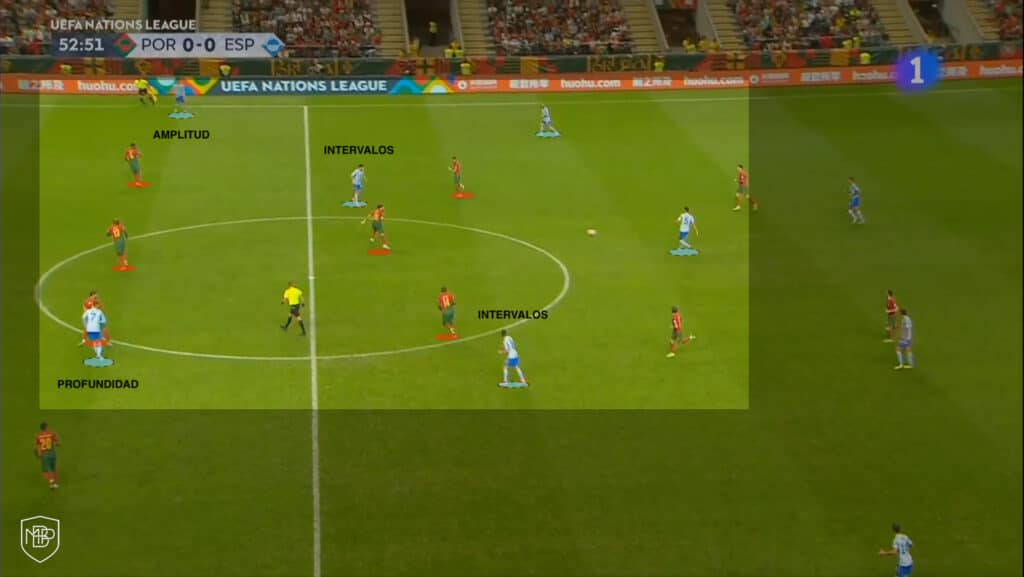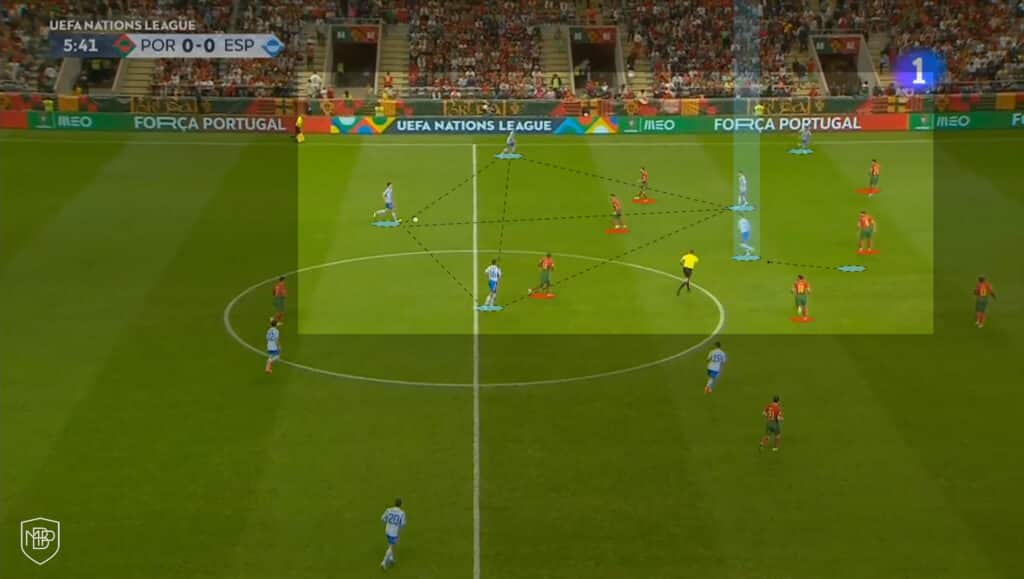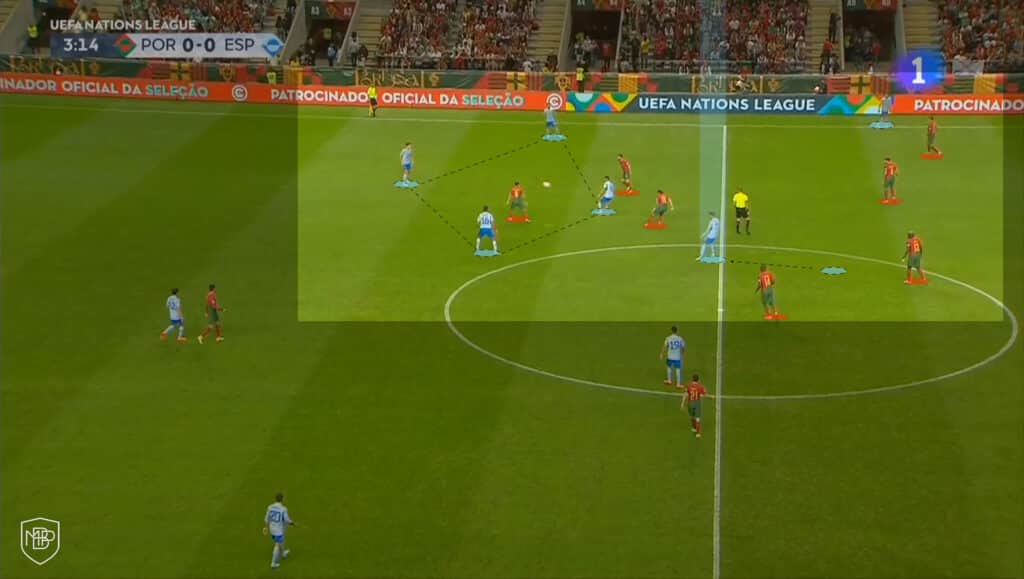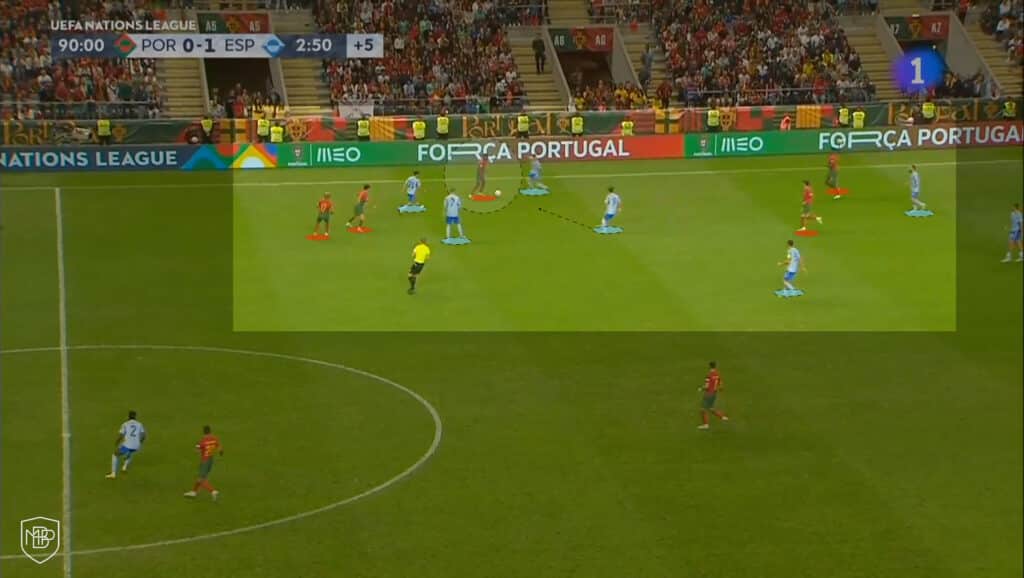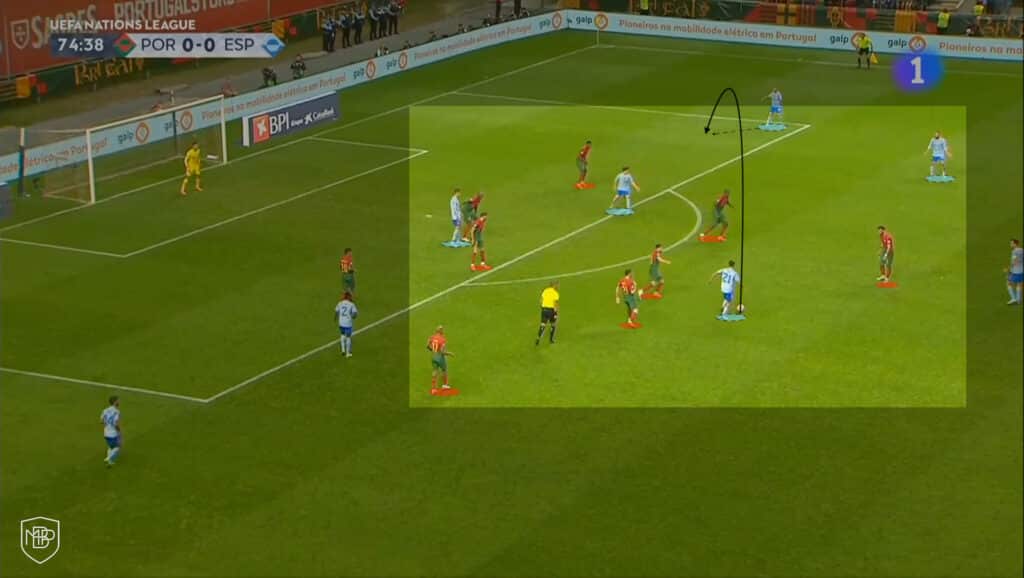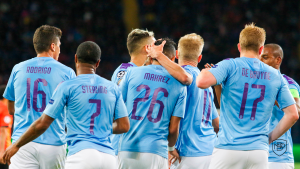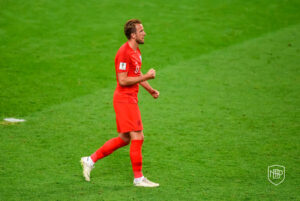Spain, led by Luis Enrique, is one of the five favourites to win the World Cup. Despite there being none of the top 10 players in the world in their squad, the Asturian coach has built a young ambitious team.
For all these reasons, at the MBP School of Coaches, we will analyse the La Roja, highlighting which base structure they use most frequently, their most important phases of play and, lastly, the star player of ‘Lucho’s’ side.
Tactical Analysis of Spain National Team
Base Structure
The initial positioning of the Spanish team is the famous GK-4-3-3 set up, used since Luis Aragones’s time as coach. From this starting position, La Roja look to implement their idea of associative play and quick ball recovery, mobilising their dynamic organisation according to the different moments of the game.
Looking deeper into the attacking phase, we can see how the dynamic organisation of the team only varies according to the height of some players. The full backs are positioned on the same line as the holding midfielder, and the central midfielders locate themselves in the interlinear intervals.
As for the dynamic organisation of the team in the defensive phase, Luis Enrique sets up his team in a GK-4-3-3 in moments of pressing in the dynamic build up and progression of the opponent. On the other hand, when defending the final 3rd and in the finishing zone, Spain move into a GK-4-1-4-1, looking to accumulate numerous players in the central channel, and to even out possible 2vs2 situations on the wings.
Phases of the Game
We can identify which phases of the game are dominated by La Roja, highlighting the strength of the side in the moments of ball possession and in the moments following turnovers.
For more than 10 years now, La Roja have been characterised by playing an associative style that allows them to dominate the game, controlling the tempo of the match and conditioning opposing teams to be locked in an organised defensive phase for long periods of time.
Through the creation of triangles in the intervention zone, and the search for situations of positional superiority, Luis Enrique’s team aim to generate optimal playing situations that allow them to progress.
For the proper development of the game idea, Spain always aim to ensure the application of the general ‘triple threat’ principle, i.e. to ensure width, depth, and the occupation of intervals at all times.
Likewise, another of the most common behaviours, in this case specifically in the striker, is his constant participation in moments of progression and in the final 3rd. We can see how they drop deeper, in order to position themselves in the intervention zone and generate situations of offensive numerical superiority.
Thanks to the accumulation of players in the active ball zone, they manage to accumulate a high density of opposition players, creating space in far areas which they can then try to exploit through switches of play.
Another of the characteristics of the Spanish attacking phase, and one that differentiates this team from previous ones, is the variability of profiles in the attacking forward line. All the players have different technical and tactical qualities, giving the coach an infinite number of possibilities depending on the opponent.
For example, if the winger is Pablo Sarabia, the player’s tendency will be to go inside, making the team appear flatter in the final third. On the other hand, if the winger is Yéremy Pino or Nico Williams, the team will have a more electric winger with a greater tendency to look for 1v1 situations against the opposing full back.
The second phase that the team take full control of is the attack-defence transition, especially in the moments after losing the ball. For this, it is vital that the players close to the ball are able to exert intense pressure on the on-ball opponent, forcing him to play long without any tactical intentionality, or to move the ball back to a deeper line.
Similarly, the behaviour of the players in the middle and far zones is of great importance. While some of them carry out a second line of pressure, those further back make diagonal runs in an attempt to protect the central channel and the space behind them.
Star Player
Depending on the situation, there is always one player who is more important than others, but in this team, Pedri’s role is essential for the side to function well in all phases and moments of the game.
The Canary Islander has to be the player in charge of making the difference during the attacking phase, and especially in the moments of the final 3rd and finishing zone, as he was in the last Euro 2020.
As well as being a magnificent creator for his teammates through the application of the fundamental ‘Playing Advantageous Passes’, the FC Barcelona player has the ability to always direct the game towards the most favourable spaces for progression.
He has also emerged as a goalscorer this season, particularly through runs from the second line. This new aspect of the player will be essential in matches where opponents choose to defend deep, and where the team will need to surprise them with forward runs from deep.
Conclusion
The Spanish national side aim to return to glory 12 years after their last success. To do so, Luis Enrique has built a team that is far removed from individuals, and with a game idea that has developed to take La Roja to their highest levels of performance.

